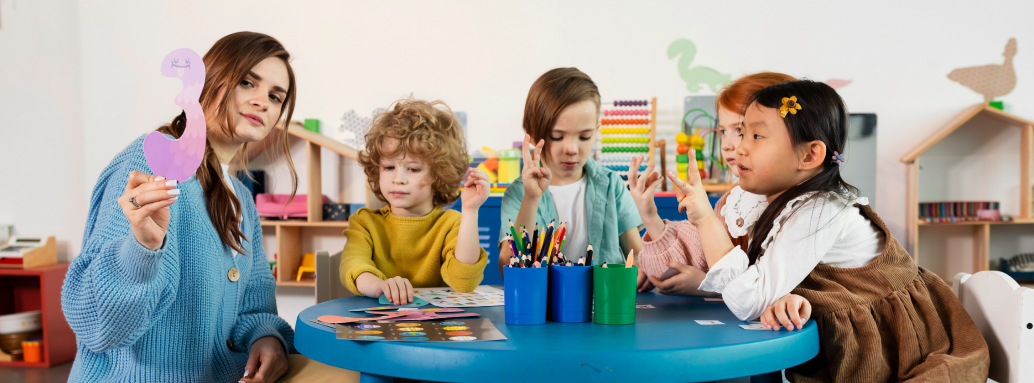Isn't it beautiful how every snowflake is unique, yet they all come together to create a winter wonderland? Similarly, people come from various backgrounds, cultures, and experiences, making our world rich and diverse. Teaching children about this tapestry of diversity and the importance of inclusion is essential for their personal and societal growth.
In a world where diversity is celebrated, teaching children about diversity and inclusion is more important than ever. As parents and educators, it's our responsibility to nurture empathy, understanding, and acceptance in the hearts of young minds. By doing so, we can help build a society that values differences and promotes unity.
The Importance of Teaching Diversity
Benefits for children
When children understand and appreciate diversity, they:
- Develop empathy and understanding.
- Learn to communicate with individuals from various backgrounds.
- Enhance their critical thinking by understanding different perspectives.
Impacts on society
Children who appreciate diversity become adults who create inclusive communities. They:
- Foster peaceful coexistence.
- Drive innovations by merging different ideas.
- Reduce biases and prejudices.
Introducing Diversity to Young Minds
Storytelling and books
What's better than snuggling up with a good book? Books that showcase different cultures, races, and experiences help children walk in others' shoes, promoting empathy.
Diverse toys
Toys like dolls of different ethnicities or puzzles showcasing global monuments can make playtime a lesson in diversity.
Role-playing activities
Let's pretend to visit a home in Japan or celebrate Diwali! Role-playing introduces kids to global cultures in a fun, engaging manner.
Understanding Diversity
Defining Diversity
Diversity encompasses differences in race, ethnicity, culture, religion, gender, abilities, and more. It's about recognizing that each person is unique and should be respected for who they are.
The Role of Culture in Diversity
Culture plays a significant role in shaping diversity. Exploring different cultures allows children to appreciate the richness of our world and understand that there is no single "right" way to live.
Talking About Inclusion
Defining inclusion
Inclusion isn't just about understanding diversity—it's about embracing it! It's ensuring everyone feels valued and included, regardless of their differences.
Inclusive playdates and activities
Organize playdates with children from different backgrounds. It's a fun way for kids to learn about various cultures and make new friends!
Why Teach Diversity and Inclusion?
Fostering Empathy and Understanding
Teaching diversity and inclusion helps children develop empathy by putting them in others' shoes. It encourages them to see the world from different perspectives and understand the challenges others may face.
Preparing Children for a Diverse World
Our world is becoming increasingly globalized. Teaching diversity prepares children to navigate this world with grace, adaptability, and an open mind.
When to Start?
Age-Appropriate Ways to Introduce Diversity
Even young children can start learning about diversity. We'll explore age-appropriate methods for introducing these concepts.
The Significance of Early Exposure
Early exposure to diversity helps children form positive attitudes and reduces the likelihood of biases developing later in life.
Choosing Age-Appropriate Materials
Books, Toys, and Media for Teaching Diversity
Selecting the right materials is crucial. We'll recommend age-appropriate books, toys, and media that promote diversity and inclusion.
Avoiding Stereotypes
It's essential to avoid materials that reinforce stereotypes or biases. We'll provide tips on how to spot and avoid such content.
Modeling Inclusive Behavior
Leading by Example
Children learn by observing adults. We'll discuss how modeling inclusive behavior can have a lasting impact.
Addressing Biases and Prejudices
We all have biases. Learn how to address them openly and honestly with children.
Activities and Games
Fun Ways to Teach Diversity
We'll share engaging activities and games that make learning about diversity enjoyable for children.
Encouraging Open Discussions
Creating a safe space for children to ask questions and express their thoughts is crucial. We'll provide strategies for facilitating open discussions.
Creating an Inclusive Environment
Classroom and Home Strategies
Whether at school or home, there are steps you can take to create an inclusive environment.
Celebrating Differences
We'll explore ways to celebrate cultural festivals and traditions, fostering a sense of belonging for all.
Dealing with Difficult Questions
How to Answer Challenging Queries
Children are naturally curious and may ask tough questions. We'll guide you on how to address these inquiries with sensitivity.
Promoting Critical Thinking
Encouraging children to think critically about what they see and hear is essential for their development.
Incorporating Diversity in Education
Curriculum Development
Educators can play a vital role in teaching diversity by incorporating it into the curriculum. We'll discuss how this can be achieved.
Collaborating with Educators
Parents and teachers can work together to reinforce lessons about diversity, ensuring continuity in the child's learning journey.
Parental Involvement
Supporting Teachers
Supporting teachers in their efforts to teach diversity can have a significant impact on your child's education.
Continuity Between School and Home
Learn how to create a seamless learning experience by aligning what children learn at school with what they experience at home.
Measuring Progress
Assessing Children's Understanding
Discover methods to assess your child's understanding of diversity and inclusion.
Adapting Teaching Methods
As children grow, their understanding of these concepts will evolve. Learn how to adapt your teaching methods accordingly.
Benefits of Teaching Diversity and Inclusion
Emotional Intelligence and Social Skills
Teaching diversity enhances emotional intelligence and social skills, setting children up for success in relationships and society.
Preparing Children for a Globalized World
A diverse and inclusive education prepares children for a future where global interaction and cooperation are essential.
Challenges and Pitfalls
Common Obstacles in Teaching Diversity
We'll address common challenges faced when teaching diversity and offer solutions to overcome them.
Overcoming Resistance
Sometimes, resistance to diversity education arises. We'll discuss strategies for addressing and mitigating such resistance.
Overcoming Challenges
Addressing stereotypes
"Hey, why does she wear that on her head?" Kids are curious. Use these questions as opportunities to explain and debunk stereotypes.
Encouraging questions
It's okay not to know everything. Encourage children to ask questions, and answer them honestly. If you're unsure, it's a learning opportunity for both!
The Role of Schools and Educators
Classroom inclusivity
From diverse classroom materials to inclusive activities, educators play a pivotal role in promoting diversity and inclusion.
Diversity in curriculums
Lessons that incorporate global cultures, histories, and contributions of diverse groups enrich the learning experience.
Conclusion
Just as a garden flourishes with a variety of flowers, our society thrives with diverse individuals. By teaching our children about diversity and inclusion, we're planting seeds for a harmonious, inclusive future. Teaching children about diversity and inclusion is an investment in a more compassionate and harmonious future. The impact of this education goes beyond childhood and shapes individuals who value and embrace diversity.
FAQs
1. At what age should I start teaching my child about diversity and inclusion? Start early, as young as preschool age, by introducing basic concepts in an age-appropriate manner.
2. How can I address difficult questions my child may have about diversity? Encourage open conversations, provide honest answers, and use age-appropriate language.
3. What are some recommended books and resources for teaching diversity to children? Look for books like "The Colors of Us" by Karen Katz and online resources like Sesame Street's "We're Different, We're the Same."
4. How can schools promote diversity and inclusion in their curriculum? Schools can integrate diverse perspectives into subjects, celebrate cultural events, and encourage respectful discussions.
5. What if my child's school is not teaching diversity and inclusion? Communicate with the school and advocate for the inclusion of diversity education in the curriculum. You can also supplement at home.
Billing, Invoicing Automation & Smart Finances
Communication & Engagement
Child Development & Progress
Waitlist, Forms & Attendance
Effortless Team Management
Daily Updates That Matter
Templates & Printables
Blogs
Webinars
Case Studies & Testimonials
FAQs
Help Center



